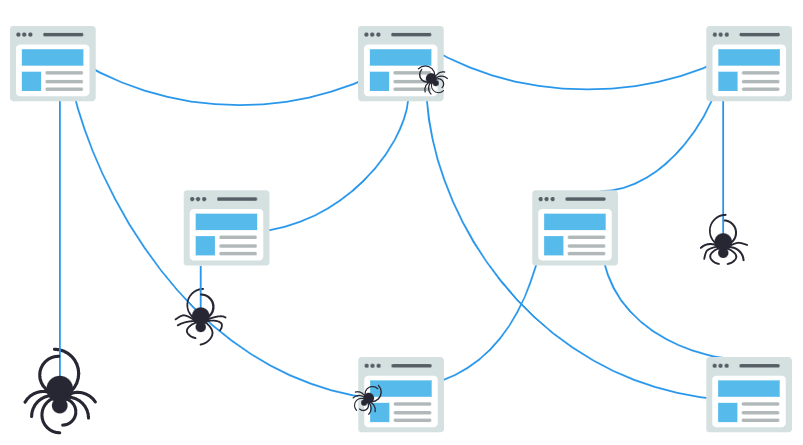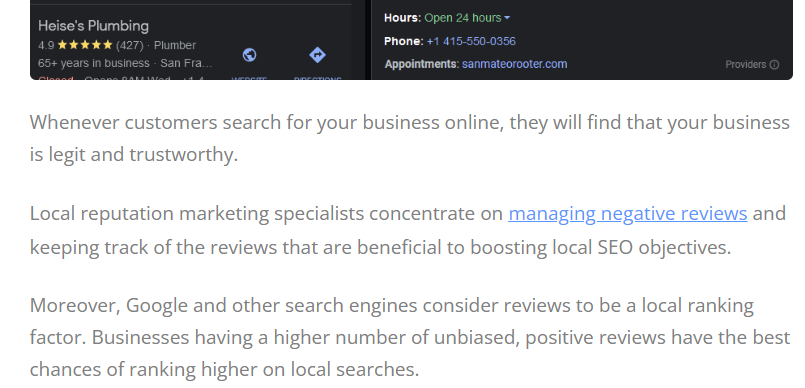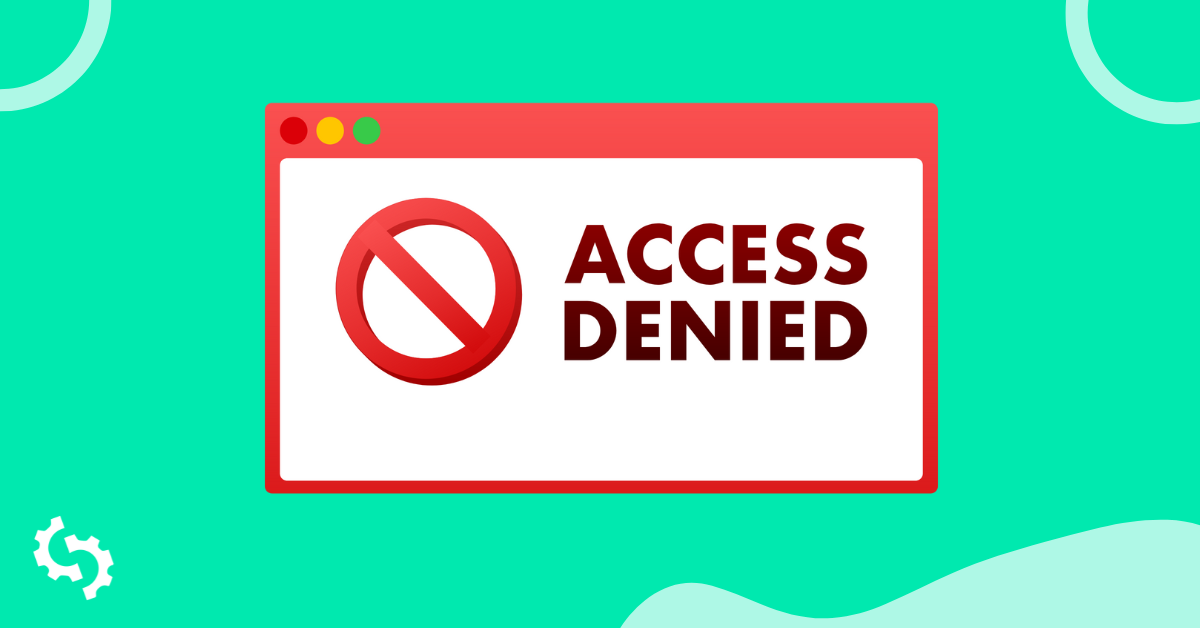
Improving a website’s ranking ability involves standard practices such as on-page SEO, technical SEO, link-building, etc. A vital aspect of search engine optimization is link-building. However, when most people think of link-building, they only imagine building links to a website’s homepage. Many marketers and webmasters sometimes forget about deep linking for SEO.
If you are an SEO professional or digital marketing freelancer specializing in SEO, then you need to know how to properly go about deep linking for search engine optimization.
In this article, you will learn why deep linking is a powerful aspect of link-building and SEO. We’ll also share how you can implement deep linking on your website.
What is Deep Linking?
Deep linking for SEO is a link-building strategy whereby links are built to web pages other than the main pages of a website. So instead of building links to the homepage, links are built to pages containing blog posts.
Examples of Deep Linking
Deep linking for SEO only works when the page(s) you are linking to is relevant to the content that the reader is currently reading.
For example, our article about how to do a brand audit states that conducting a brand audit should form part of the overall digital marketing plan.
So, we added an internal link to our article on how to write a digital marketing plan, since it’s relevant to the context of this specific snippet of text.

Another example of deep linking for SEO can be found in Hootsuite’s article on conversational commerce.
Within the article, they briefly mention using AI chatbots as customer service agents. However, they’ve added a link to one of their articles covering chatbots in even more detail.
By clicking on the link, a reader will be able to get even more information specifically covering chatbots for businesses. This increases the total time spent on site and reduces bounce rates.


The last example that we’d like to share of deep linking for SEO can be found in a blog article from Sendx. The article covers 12 different eCommerce email marketing trends in 2022.
One of the discussion points is on email design trends, featuring a 63-words snippet about email newsletter designs.
Because they can’t cover email newsletter design best practices in one short snippet of text, they linked to a separate article covering this specific topic.

Why is Deep Linking for SEO Important?
There are two main reasons why deep linking is important, we’ll discuss each one of them below.
Increases Traffic to Internal Pages
Deep linking increases the traffic to internal pages. Imagine you get 1,000 visitors to one of your best-ranking pieces of content or website pages.
By adding some internal links to that article or web page, you’ll be able to get a few of those visitors to click through to other internal pages on your website.
Now obviously you won’t get all the traffic on one page to visit the internal page you linked to. But even if just 1% of the 1,000 visitors clicked through, you’ll still end up with at least 10 new visitors that you wouldn’t have had.
Increases Rankings
Deep linking helps Google understand your website’s architecture and what your website is about.
Google crawls a website and uses the on-page links to discover new content to add to its database of pages. Through deep linking, webmasters can help Google to discover new pages.

Furthermore, by using optimized alt tags that describe what a page is about, SEOs can give Google bots more information about the content that they can expect to find on the linked pages. (more on this later)
Lastly, the more links a page has pointing to it, the more Google will consider it a valuable page. However, this doesn’t mean you should fill your content with internal links just because you want as many links pointing to a page as possible.
You should only add internal links in a natural, non-spammy way.
The Correct Way to Implement Deep Linking on your Website
Now that you know the advantages of deep linking for SEO, let’s discuss how you can correctly implement this on your website.
Create a Lot of Content
In order for you to benefit from deep linking, you need to create a lot of content. Now, this doesn’t give you permission to go about creating tons of content without any regard for quality.
You still need to produce content that your audience will find useful and relevant. The best type of content to produce is evergreen content, so stay away from producing content that is seasonal or based on current events.

You can also have a look at what content your competitors are producing, and then incorporate that into your content production strategy.
When getting ideas and producing content based on what your competitors are doing, remember to be original and add your own opinion, insights, or personality. You should never copy what your competitors are saying.
Link to Relevant Content Only
The number one rule of deep linking for SEO is to only link to relevant content. If your content is about how to create a mobile game, then linking to a piece of content about accounting software won’t help your readers.
Always ask yourself if the content you are linking will give your reader more insights about the topic at hand.
For our example of creating a mobile game, linking to an article about 10 examples of great mobile games or the top programming languages for mobile games will be useful.
Deep Linking and Guest Blogging
Guest posting is a useful way to build links to your website and to get more exposure for your brand or business.
However, when guest blogging, do you also consider deep linking instead of only thinking about building links to your homepage?
Adding links to relevant articles in your guest posts will give your content even more ranking power.
Besides, most guest blogging websites allow up to 2 links per post. This means you can link to your homepage as well as one of your already published blog articles.
Bonus tip: Most guest blogging guidelines specify that you may only add 2 to 3 of your own links in the posts you submit. To combat this, link to some of the other guest posts that you’ve created on other websites.
Use the Right Anchor Text
Setting the right anchor text for internal links is another important aspect of deep linking for SEO.
The anchor text informs the user of what they can expect to find by clicking on the links you add.
Let’s illustrate this. So for our first example of deep linking for SEO, we mentioned that a brand audit is part of a digital marketing plan.
We added the link to our article on digital marketing plans and how to write one. Whenever a reader clicks on the link, they can expect to find all the information they need related to digital marketing plans.
Not only that, setting the right anchor text can help those target pages rank in the search results.
Google and other search engines use the anchor text to get an idea of what the target page is about. This helps them to understand what the page contains, and as a result, they can rank your content for relevant search queries.

Avoid Keyword Stuffing Anchor Texts
Another important aspect of getting deep linking for SEO right is to avoid being spammy at all costs.
Not only should you avoid bombarding your pages and blog content with internal links, but you should also stay away from keyword-stuffing anchor texts.
Let’s say you’ve produced an article targeting the keyword/keyphrase “Google review management concepts” and you’d like to add some internal links to the piece.
Instead of only creating anchor texts with that exact keyphrase “Google review management concepts”, think of other anchor texts.
For example, you can use anchor texts that describe certain sections of the article you are linking to:
- respond to negative reviews
- how to get more Google reviews
- how to delete a fake review
Here’s an example of this in action, Local Ranking published an article targeting “Google review management concepts”. Although they’re targeting that exact key phrase, they used “managing negative reviews” as an anchor text in their article about local reputation marketing.

Conclusion
Deep linking for SEO is important if you want Google and readers to easily find some of your other web pages and content pieces.
So before you hit publish on your next blog article, try to add at least 2 to 3 internal links to relevant content.










